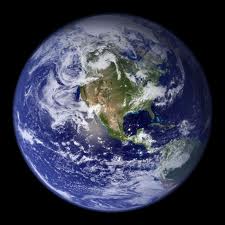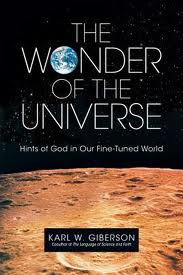 Today, Karl Giberson concludes his six-part series of excerpts from his new book The Wonder of the Universe: Hints of God in a Fine-Tuned World . Karl Giberson, noted speaker and writer about the intersection of Christian faith and science. (See first post for intro; see his complete bio here.)
Today, Karl Giberson concludes his six-part series of excerpts from his new book The Wonder of the Universe: Hints of God in a Fine-Tuned World . Karl Giberson, noted speaker and writer about the intersection of Christian faith and science. (See first post for intro; see his complete bio here.)
In this sixth excerpt, Giberson tells us what he thinks about God and science and how the two fit together.
Excerpt #6: How the World Looks to Me
I try to be cautious but not timid in drawing connections between the wonder of the world and belief in God. I don’t think the profound character of mathematics, which I find especially provocative, proves that God exists. But I do think it makes belief in a reality that transcends the physical world entirely reasonable and, I would argue, necessary.
I don’t see how we can deny the existence of a transcendent realm where, at the very least, the truths of mathematics eternally reside.
The challenge is defending or even describing the thought process by which one moves cautiously from the mystery of mathematics to the reality of the transcendent, to the existence of God, and finally to a worldview that includes belief in the God of the Christian tradition. Such a journey involves far more than reflection on math, of course, but there really isn’t any simple road in place to even make such a journey.
This does not suggest, however, that such a journey is inappropriate or can be made only by constantly taking irrational leaps of blind faith. Many thoughtful people—and I am one of them—have made that journey.
The world as we are coming to understand it is far too complex to be understood by simply collecting facts, drawing conclusions and weaving the conclusions into an all-encompassing tapestry of illumination. Careful thought demands, of course, that we pay attention to the reasoning process and watch out for errors. But as we work our way from simple experiences to deep conclusions about the way the world is, we constantly find ourselves forced to go beyond mere generalizations from facts.
It is as though we have carefully assembled our house by following the blueprint to the letter, only to discover, as we pass through the front door, that our new house is grander than we anticipated.
One of the twentieth-century’s deepest thinkers, the Hungarian chemist-turned-philosopher Michael Polanyi, articulated this feature of our experience in his immortal phrase “we can know more than we can tell.” Polanyi, who had a profound understanding of science and its limitations, argued that our quest for truth makes meaningful use of hunches, intuitions and creative imaginings. The layers of understanding that we wrap around our experiences are, by definition, larger than those experiences.
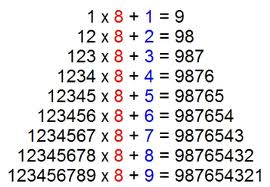 When Paul Dirac suggested that it was important to have “beauty” in one’s equations, what did he mean? We don’t even have a clear concept of mathematical beauty, much less an aesthetic yardstick to measure it. Freeman Dyson wrote, “The more I examine the universe and the details of its architecture, the more evidence I find that the universe in some sense must have known we were coming.” What could Dyson possibly mean by this deeply metaphorical statement? What details suggested this to him?
When Paul Dirac suggested that it was important to have “beauty” in one’s equations, what did he mean? We don’t even have a clear concept of mathematical beauty, much less an aesthetic yardstick to measure it. Freeman Dyson wrote, “The more I examine the universe and the details of its architecture, the more evidence I find that the universe in some sense must have known we were coming.” What could Dyson possibly mean by this deeply metaphorical statement? What details suggested this to him?
If Dyson and Dirac were run-of-the-mill physicists working at some minor state university or apologetics project somewhere, their comments would be dismissed. But they are two of the greatest mathematical physicists in the history of science, with deep, deep insights into the world. They are rightly respected for the equations and theories they discovered and developed. But these equations and theories are just the part of what they know that can be explained. The reality is that they know more than they can tell.
Geniuses like Dyson and Dirac transcend their disciplines in ways that allow them to speak freely in ways denied to lesser thinkers. Their reputations are such that they can acknowledge the mysteries of the world without raising suspicions that they have some hidden quirky agenda, or that their achievements were some sort of fluke.
Let me conclude by making some connections between science and religion, and showing why I, as a Christian and a scientist, find such wonder in the world, and why, despite the red flags, I think Christians stand on solid ground.
Christians all have a theology of nature, no matter how vaguely conceived. We believe the world we live in is a creation, and we cannot experience it as anything else. That belief illuminates the world for Christian scientists. The belief in the reality of God informs the experience of the wonders of creation.
But our experience of the wonders of creation also informs our understanding of God. If we think of God as rational or loving or artistic or merciful or just or creative, those concepts and definitions take shape in the world we live in, not in some other reality, whatever that might be. If we find the world filled with wonders that move us spiritually or point beyond themselves or inspire us in ways not captured by our explanatory nets, we need not simply shrug our shoulders about why that might be.
I think we can reasonably embrace the idea that there must be a transcendent reality in which these experiences are grounded. This, of course, is natural theology, and we must refrain from loud cheering as we draw our conclusions. But there is nothing simple-minded or naively modernist about seeking comprehensive understandings of they way things are, even if we have to “tell less than we can know.”
My own thinking about how all this fits together comes from my own internal conversation between my theology of nature, which grows out of my Christian faith, and my willingness to take seriously, if cautiously, the insights from natural theology, that are rooted in my appreciation for science and the world disclosed by its insights.
The rational character of the laws of nature suggests that the universe is built a foundation that points beyond the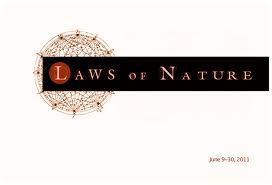 physical. This evidence suggests the existence of another reality that we have to take seriously. This is a hint of God, as I have titled my book. If the universe is grounded in the rationality of God, then it makes sense. If not, the universe is a tale told by an idiot, full of sound and fury (and equations) but signifying nothing.
physical. This evidence suggests the existence of another reality that we have to take seriously. This is a hint of God, as I have titled my book. If the universe is grounded in the rationality of God, then it makes sense. If not, the universe is a tale told by an idiot, full of sound and fury (and equations) but signifying nothing.
The fine-tuning of the universe is either an implausible coincidence, a lottery created by the multiverse, or evidence that a Creator designed the universe for life. The third option is the one I choose, and, while qualifications and cautions are in order, I think it is the most reasonable of the options.
The Christian tradition informing my values highlights the significance of humans, created in the image of God and given dominion over the earth. I believe that life more or less like that of our species is built into the structure of the universe—that we are intended in some sense to be here, but in a way that does not diminish the value of any other forms of life or give us license to exploit.
The natural trajectory of life toward cooperation and relationship suggests to me that this is more than the simple outworking of some survival equations from game theory. Our deeply rooted affinity for community is a part of the way things are supposed to be. We are intended to love one another. The appreciation that evolutionary biologists now have for the importance of community reveals they have arrived at insights that Jesus shared with his followers in the first century.
This dialogue between my theology of nature and my natural theology enriches both conversation partners and provides a coherent synthesis that makes the whole more than the sum of the parts. I know more than I can tell. But I am fully convinced that we can know things about the world. We are not mired in local provincial worldviews.
I have never understood the strong form of postmodernity that makes the strange claim that we can know nothing for certain. I once challenged a leading scholar of postmodernity who insisted that all scientific truth was constructed by the social activities of the scientific community rather than discovered, making every scientific claim relative.
“Is the earth round?” I asked her, a professor at one of Boston’s leading universities. She hesitated for a rather long time without answering, and said something irrelevant. “Surely we can know the earth is round?” I persisted. “That claim isn’t constructed, is it?” I said, with growing impatience. “Isn’t the claim that the earth is round a discovery about the way the world actually is?” I pressed her further, but still she would not admit that we can know that the earth is round. The conversation ended with me storming off in a most un-Christian manner, muttering to myself that I had just had a conversation with the biggest blockhead in New England.
I understand that we are living in a postmodern age and have to accept a certain modesty in our claims about the way the world is. Modernity, built on the confidence that one could start with the incontestable facts of the world and build systems of explanation and meaning, has passed. It passed largely because the facts of the world weren’t always as incontestable as we had hoped, and because those facts were often so small that they couldn’t support anything worthwhile. That was an important lesson.
In hindsight we can now see how the prejudices and unexamined assumptions of earlier generations shaped their understanding of the world. Nineteenth-century scientists—all of them male—found ample “evidence” that women possessed an inferior intelligence. Twentieth-century racists designed IQ tests that confirmed their prejudices about the relationship between race and intelligence. We can see that the sexist and racist theories of yesterday were indeed socially constructed, fabricated from ambiguous observations stitched together with prejudice and wishful thinking. We now understand that everyone is embedded in a worldview that shapes their reflections on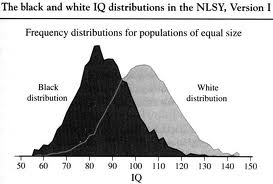 the meaning of life and even what they think are the facts of the world.
the meaning of life and even what they think are the facts of the world.
Confident assertions that all knowledge claims are socially constructed go way too far, as my conversation with the postmodern scholar about the shape of the earth makes only too clear. Any theory of knowledge that can’t endorse the claim that the earth is round should be discarded. In fact, many scientific claims are so well-established that only an irrational skeptic would have reservations.
Can we seriously doubt that atoms are real, that the earth orbits the sun or that mammals are warm-blooded? In what sense could the theory of gravity be a “construction”? Do airplanes fly successfully on a socially constructed theory of aerodynamics? Sensible people on planes believe that planes fly because scientists have discovered actual laws of aerodynamics, not made them up.
The obvious truth of so many scientific claims explains why strong versions of postmodernity are so irrelevant to science. I have never, in fact, met a postmodern scientist. Not one. Most scientists don’t know what postmodernity is, and when it is explained to them, they are skeptical that anyone could hold such beliefs.
Scientists who think about the nature of knowledge claims—and this includes me—almost all sign on to an idea known as critical realism. We believe there is a real world “out there” to be discovered through careful scientific investigation—not constructed from prejudice, duct tape and fog. We must not claim for our conclusions, however, more certainty than the evidence warrants. And we must not assume that our conclusions about the world are absolutely certain, even though they may be so probable that such an assumption would create no problems.
All knowledge claims—including those made by science—can be placed along a spectrum that runs from “merely possible” truths at one end to “essentially certain” truths at the other. If we number this spectrum from 1 to 100, we would place the belief in life on other planets at 1, since it has no evidence supporting it but is clearly something that could be explored from a scientific perspective.
On the other end of the spectrum, perhaps at the point 99.9, we place the belief in the roundness of the earth, since we cannot even imagine how it could be wrong (although we admit that absolute certainty is not warranted, since our knowledge is finite). Other scientific claims lie between these two. I might put the existence of multiple universes at 40, the 5 billion year age for the earth at 95, and the fusion theory of how stars shine at 92. No such scale actually exists in the scientific community, but every scientist will acknowledge that some of their ideas are more certain than others.
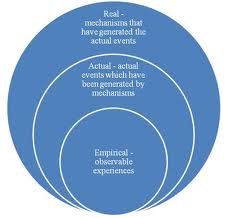 Critical realists believe that the world is known through a spiraling discovery process where we continually circle the phenomena we are trying to understand, getting closer and closer as we understand it better, but never reaching absolute certainty. A gap always exists between the thing we want to understand and our very best theory of how that thing works. The gap can be small or large, but it never entirely vanishes
Critical realists believe that the world is known through a spiraling discovery process where we continually circle the phenomena we are trying to understand, getting closer and closer as we understand it better, but never reaching absolute certainty. A gap always exists between the thing we want to understand and our very best theory of how that thing works. The gap can be small or large, but it never entirely vanishes
We can also use critical realism in our theology. We can accept, as a starting point, the existence of a transcendent reality—God—that exists “out there.” The starting point for this belief can be based on our faith tradition, our personal experience or even the arguments of the natural theologians. It doesn’t matter where we get our ideas—Dirac got some of his ideas from beauty—as long as we are prepared to test those ideas against our experience of the world.
We acknowledge—in theology, as in science—that we can understand this reality only through dialogue, as we constantly test and refine our understanding. Spiraling in on the truth. Theological results will never have the grand simplicity of the theory of gravity, but that is because gravity is simple and God is complicated, not because gravity exists and God does not.
As a critical realist who takes both science and theology—and a lot of other things—seriously, I am drawn to make connections between all the various things I think are true. I am mindful of the cautions discussed earlier, of course. But there is a big difference between the claim that, say, the fine-tuning of the universe proves the existence of God, and the more modest claim that fine- tuning fits comfortably, supportively and logically within a worldview grounded in the belief that God is the Creator of all that is. This is both an easier claim to make and a much more profound claim.
The same is true for all the hints of God. As traditional natural theology arguments, the various scientific pointers, from the beauty of sunsets to the mysterious carbon resonance, are just hints. They don’t take us very far. But as components in a larger worldview, they provide valuable confirmation.
The Christian worldview, with its belief in a God who creates and is revealed in the exemplary life, death and resurrection of Jesus, is the starting point from which we examine the mystery of our existence—the wonder of the universe. We live in a world of immense beauty, from sunsets to equations, from music to children’s laughter. We live in world of great meaning and find ourselves bound to each other by love—a love that seems as deeply embedded in reality as atoms and molecules.
But we also live in a world of great suffering. Wars, natural disasters, sickness and death all conspire to drain the meaning from life and replace it with despair. Human selfishness and frivolous indulgence tempt us toward apathy. But the Christian worldview demands that we view those features of our world as the alien interlopers, superficial anomalies to be dispatched and dissolved. The beauty and wonder of the world is the real part.
As we come to understand this world, we discover the deep and profound adequacy of the Christian worldview as it illuminates so much of what we experience, informs so much of what we do and calls us to the highest standards of service to our fellow human beings and the creation in general.
If I have been enticed into brashness
by the wonderful beauty of thy works,
or if I have loved my own glory among men,
while advancing in work destined for thy glory,
gently and mercifully pardon me:
and finally,
deign graciously to cause that these demonstrations may lead to thy glory and to the salvation of souls, and nowhere be an obstacle to that.
Amen.
—Johannes Kepler, The Harmony of the World (1619)

